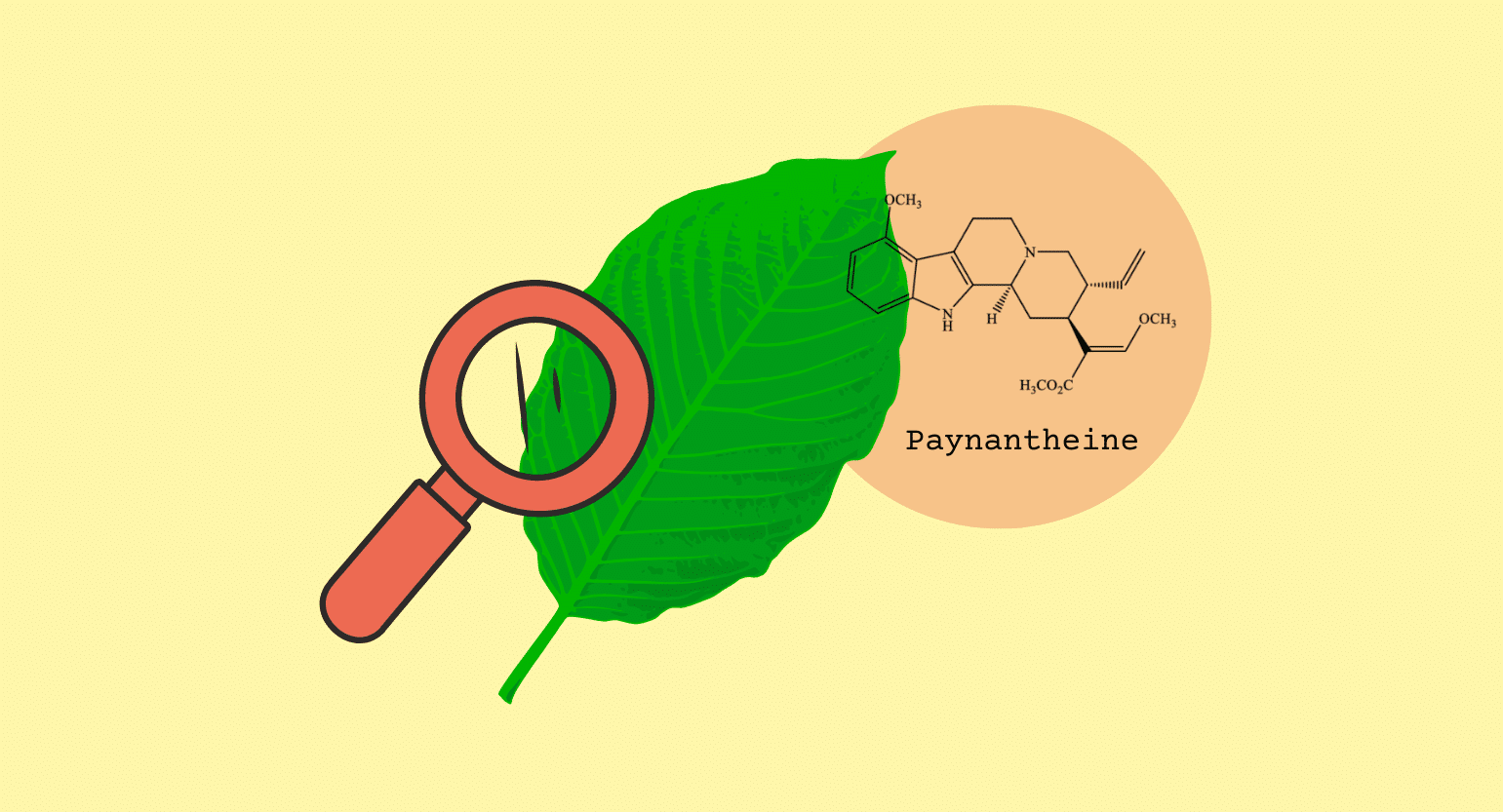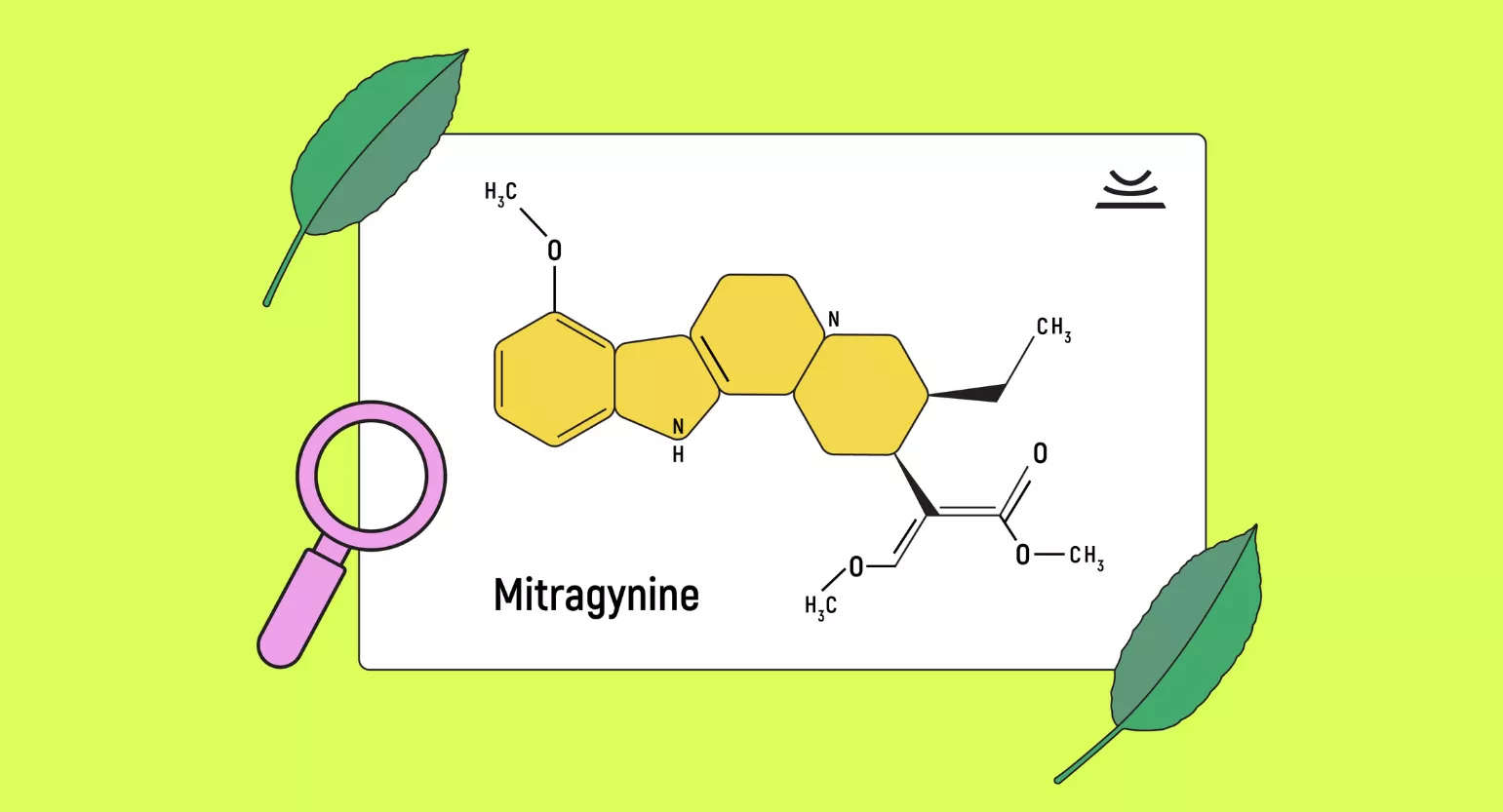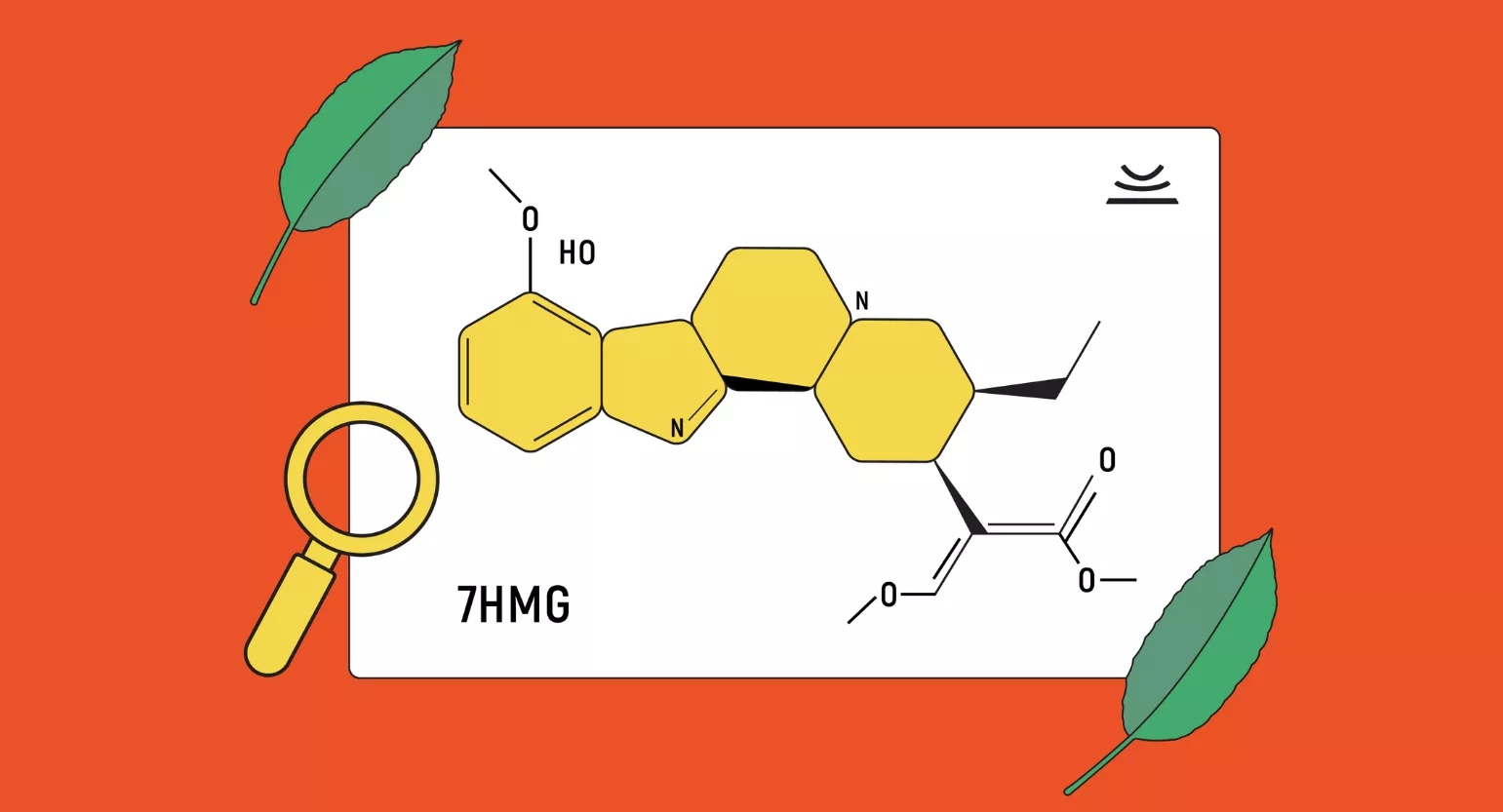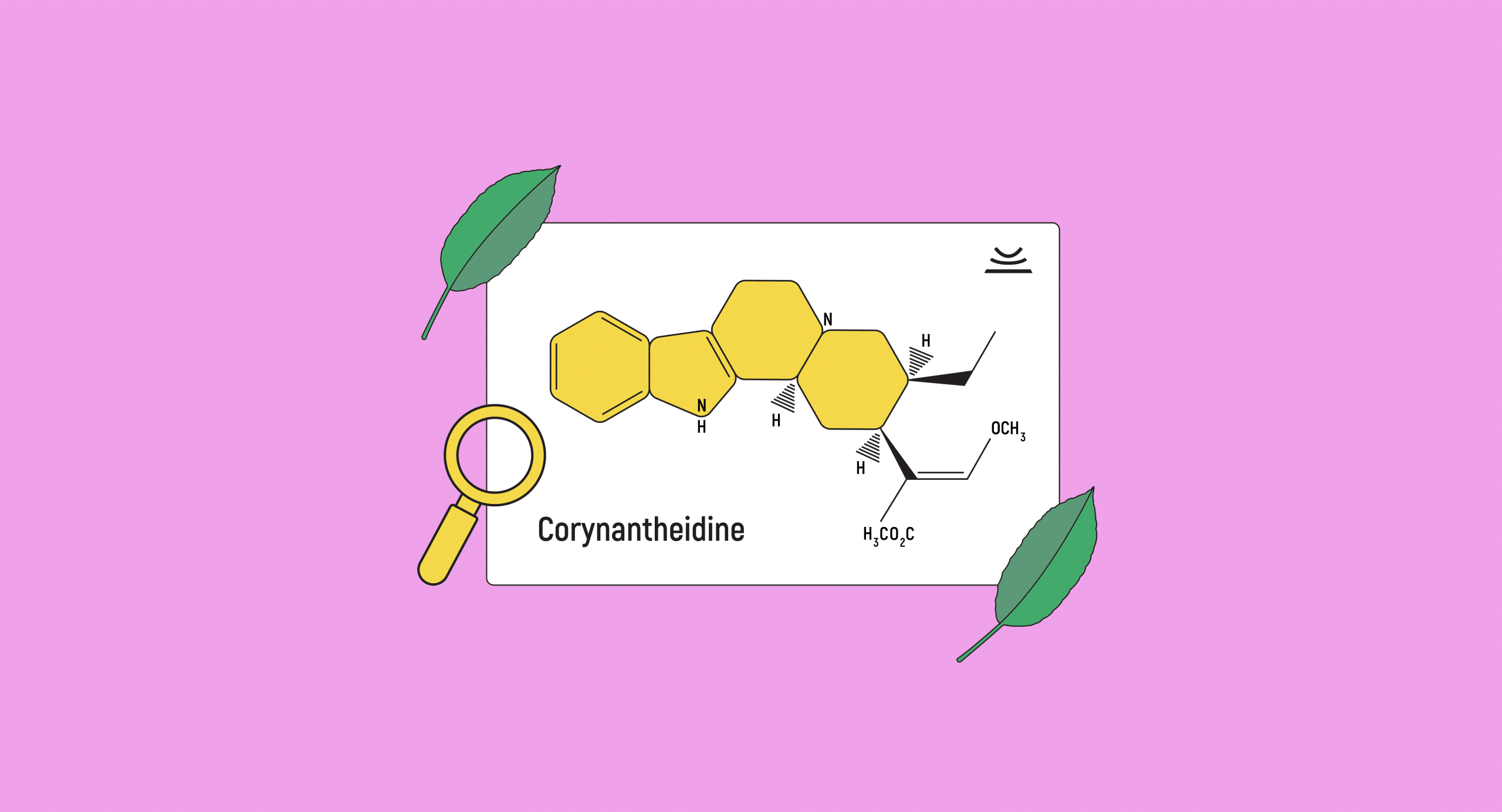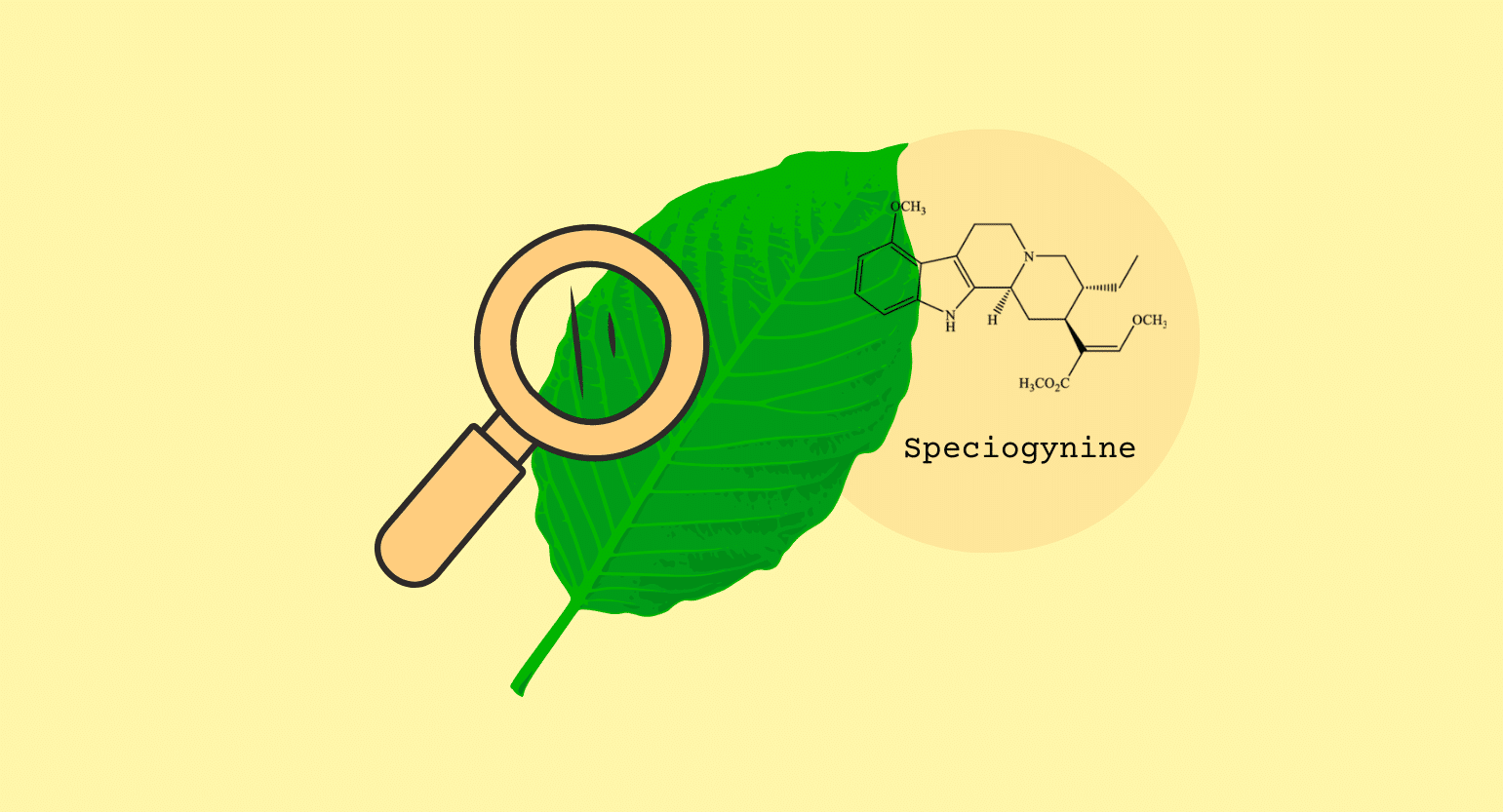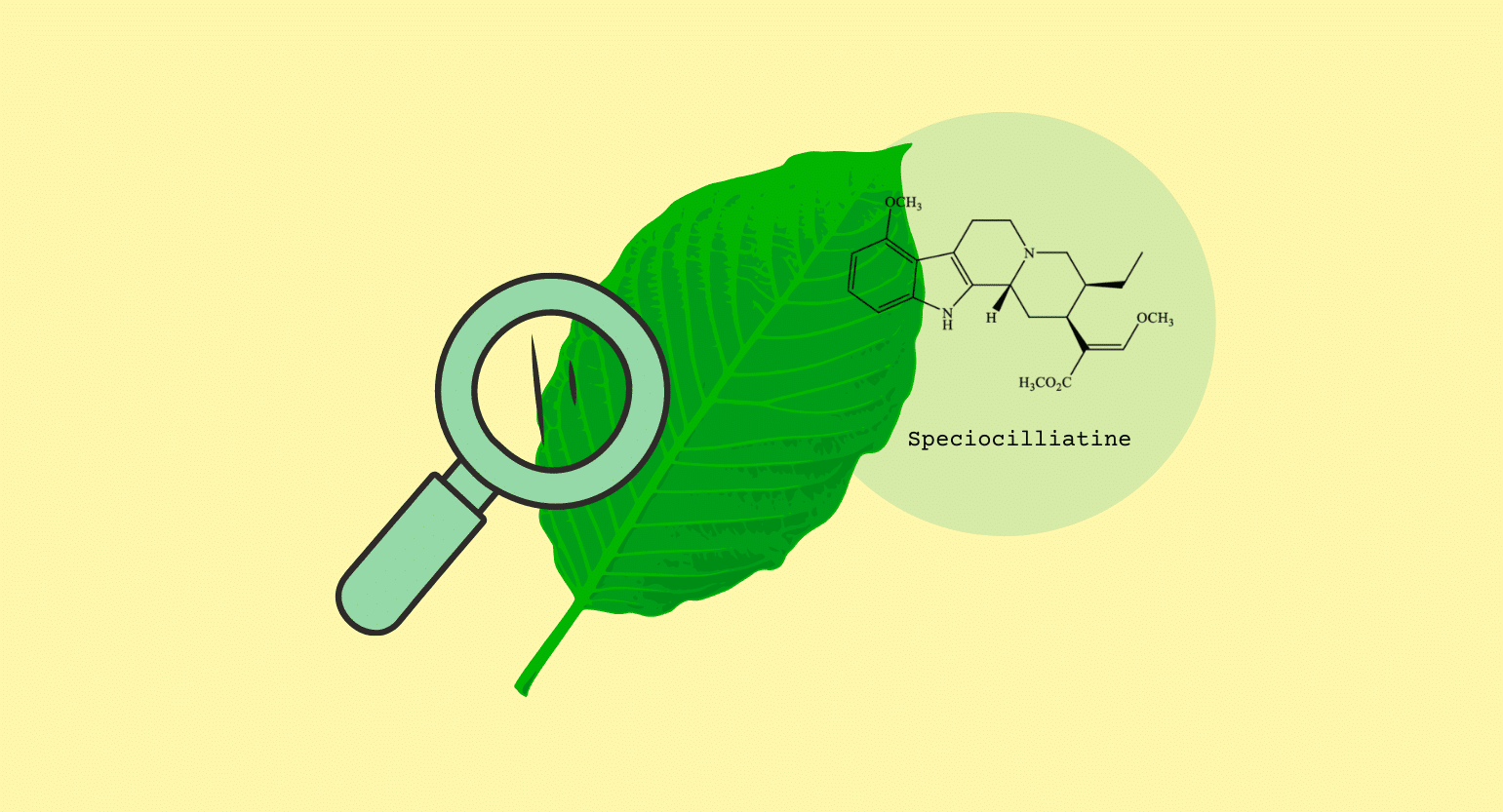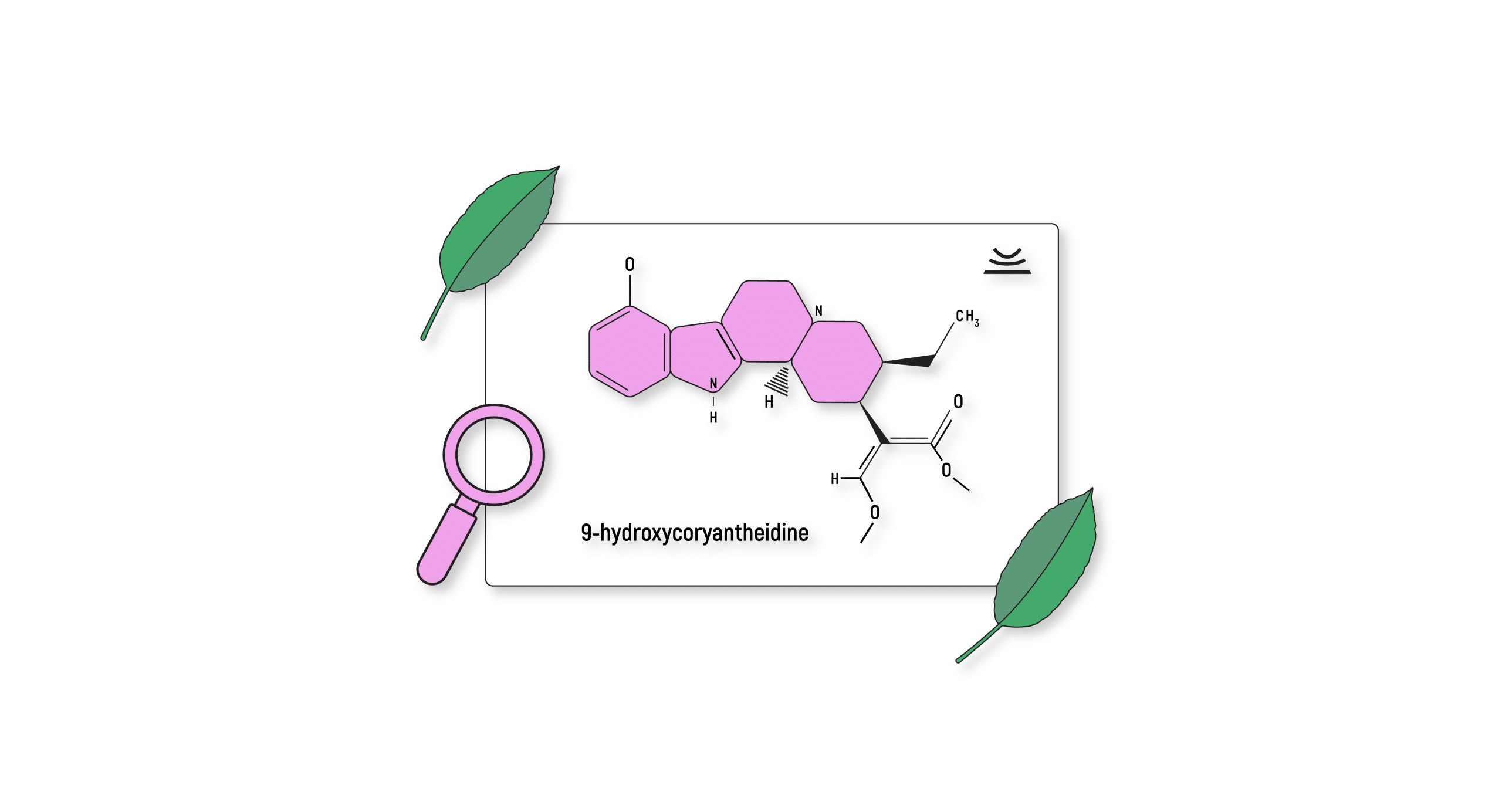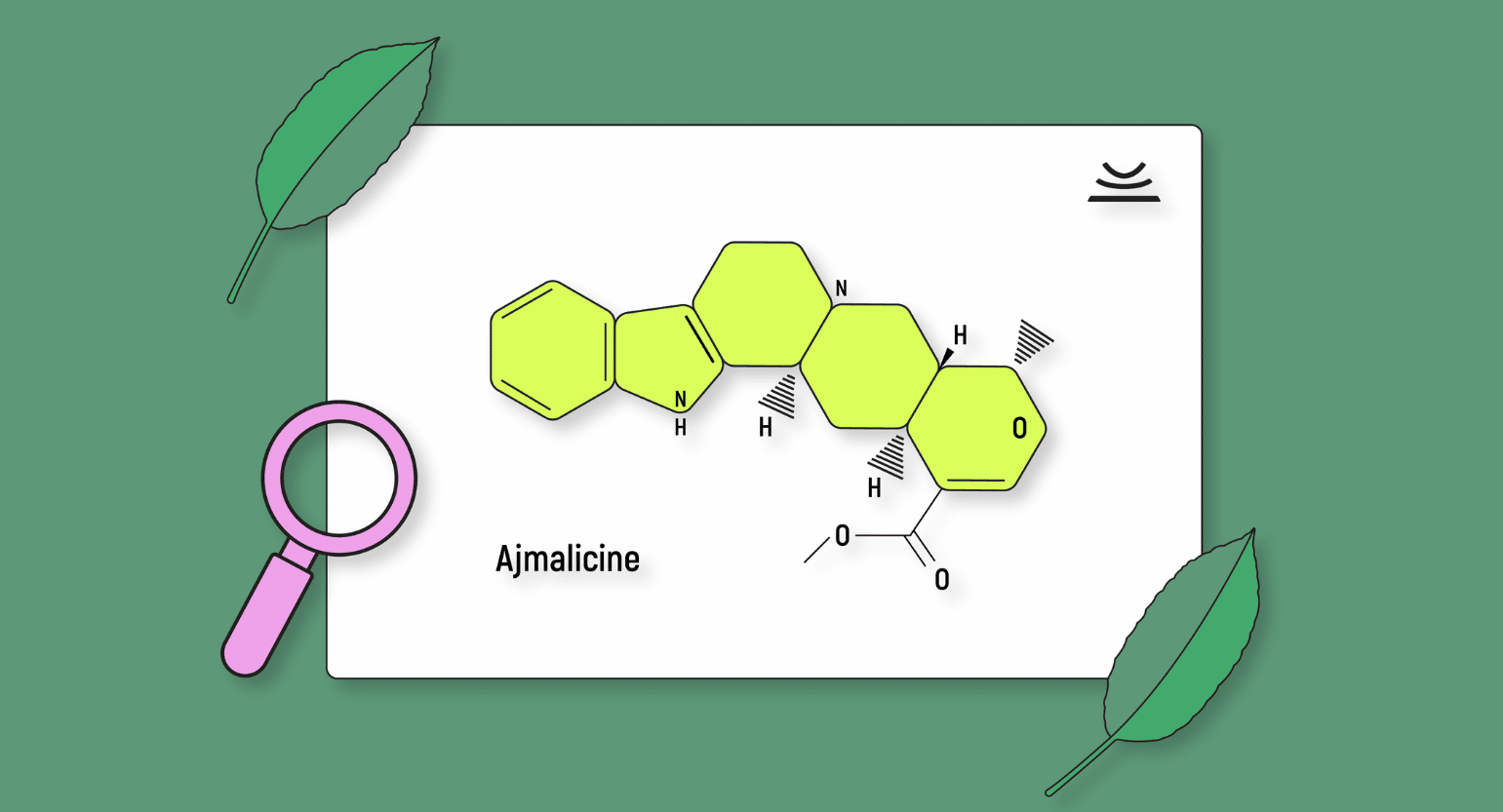What Is Paynantheine?
Paynantheine is a minor alkaloid found in kratom (Mitragyna speciosa). Alkaloids are molecules that contain at least one nitrogen atom to produce a wide range of biological activities.
Compounds like caffeine, cocaine, morphine, and countless other chemicals and drugs contain alkaloids that are responsible for their effects.
Paynantheine was found to have similar effects to 7-hydroxy mitragynine, a more prominent alkaloid in kratom. Comparatively, little is known about paynantheine compared to 7-hydroxymitragynine, but early indications suggest that it may play a role in generating kratom’s analgesic effects.
Where Does Paynantheine Come From?
Paynantheine is a derivative of mitragynine, the major alkaloid in kratom most responsible for kratom’s stimulative effects. Kratom naturally contains paynantheine due to its metabolic processes that break down and convert mitragynine to its isomers.
Technically, paynantheine is a diastereoisomer of mitragynine, a special kind of isomer with specific structural symmetries.
A study from 2014 found that paynantheine is one of the more abundant alkaloids in kratom, although it has a significantly lower concentration than mitragynine.
Other primary kratom alkaloids include:
Related: Can Fertilizers Alter Kratom Alkaloids?
Which Kratom Strains Are Highest in Paynantheine?
Researchers have studied mitragynine and 7-hydroxy mitragynine for much longer than paynantheine. We know far less about paynantheine than other major alkaloids in kratom.
This indirect line of reasoning means that red strains are probably higher in paynantheine than green or white strains, as red strains tend to be better suited for pain relief. More specifically, red vein kratom strains with a high propensity for reducing pain sensations are probably higher in paynantheine concentrations.
The likelihood is that the best kratom strains for pain relief — including Red Maeng Da, Red Kali, and Red Borneo — have some of the highest volumes of paynantheine as well.
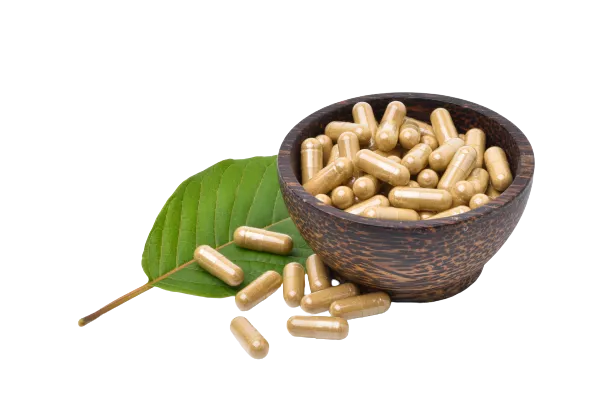
What Does Paynantheine Do?
Paynantheine is a mu-opioid receptor antagonist [1], which blocks pain signals and provides pain relief similar to opioids.
Since paynantheine is a minor alkaloid and less well-studied than 7-hydroxy mitragynine or mitragynine, it is unclear how paynantheine’s effects differ from the other kratom alkaloids at this time. Additional research is underway and should clear up how they compare.
Below is what is currently known about paynantheine and its effects on the body.
Pain Relief
Paynantheine is a mu-opioid receptor antagonist, which makes it an effective analgesic. Paynantheine likely contributes to kratom’s pain-relieving properties substantially, although precisely how much remains uncertain.
Sleep-Supportive
Many opioid antagonists also have relaxing qualities, relieving muscle tension and helping people sleep. Paynantheine may also play a role in how relaxing certain kratom strains are, although, once again, its importance is unknown.

Is Paynantheine an Opiate?
Paynantheine is not an opiate, but it does behave like one somehow. Since paynantheine is a mu-opioid antagonist, it shares the pain-blocking effects common to many opioids, making it a viable alternative for certain uses.
Interestingly, paynantheine’s similarity to opioids makes it effective for treating the symptoms of opioid withdrawal. Some people believe that paynantheine — more specifically kratom — gives people recovering from opiate addiction a viable way to manage withdrawal symptoms, increasing the likelihood of recovery.
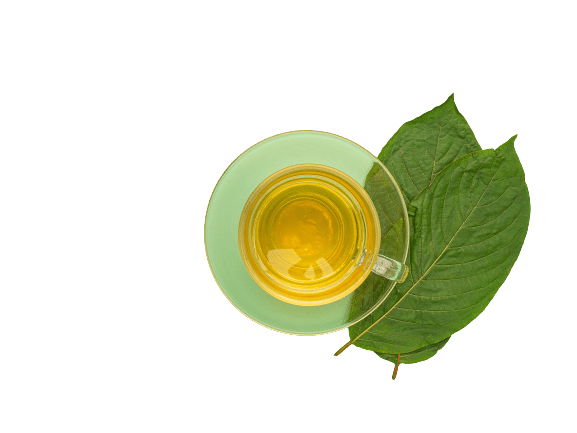
Is Paynantheine Safe?
If taken responsibly, paynantheine is likely safe. It’s worth mentioning that taking paynantheine isolate is currently not possible. The only way to consume paynantheine is by taking kratom, meaning that responsible paynantheine use means following the guidelines for safely using kratom.
Side Effects of Paynantheine
Paynantheine’s side effects by itself are not well understood, but when taken as kratom, common side effects may include dizziness, confusion, lethargy, nausea, constipation, and diarrhea. Managing side effects is about controlling your dose (more on that in a bit).
The most concerning side effect of using kratom is addiction. Experts suggest limiting kratom use to fewer than five days per week and taking extended breaks every one to two months. Using kratom every day can lead to physical dependence and undue strain on your body.
Also see: How Long Should I Wait Between Kratom Doses?
How Much Paynantheine Should I Take?
It isn’t feasible to extract paynantheine and take it in isolation, so most people interested in it take kratom instead. Dosing kratom is half art and half science since everyone reacts to it differently. Still, some general guidelines help you find your sweet spot.
Low doses in the 1 to 3-gram range are best for mild stimulation, focus, and productivity. All kratom strains are more stimulating in low doses, but white-vein kratom shines in this range.
Most people consider 3 to 6 grams to be a moderate dose of kratom. In this zone, kratom is a balanced mix between stimulation and sedation, giving users smooth energy, moderate pain relief, and pleasurable relaxation.
Higher doses from 6 to 10 grams are best for pain relief and insomnia since they are intensely relaxing. Some people discover that high doses are more likely to lead to unwanted side effects, making it a game of trial and error to find the right dose.
How Long Do the Effects of Paynantheine Last?
Most people feel the effects of kratom’s alkaloids — including paynantheine — anywhere from one hour up to five or six hours. How long the effects of kratom last depends on the dose, strain, and person taking it, so your mileage may vary.

Wrapping Up: Final Thoughts On Paynantheine
Paynantheine often takes a back seat to other alkaloids like mitragynine and 7-hydroxy mitragynine, but recent research suggests that it may play an important role in creating kratom’s pain-relieving effects. As researchers learn more about paynantheine, it will become clearer how it interacts with the other alkaloids in kratom to produce the subjective experiences users enjoy.
It isn’t currently practical to take paynantheine by itself, so people interested in experiencing its effects usually take kratom powder, capsules, or tinctures. Safely using kratom is all about managing dose size, taking regular breaks, and listening to your body. Extended periods of lethargy are a telltale sign that you need to take a break from kratom.
People looking for kratom strains with the highest concentrations of paynantheine should stick to red-vein strains, as these most likely contain more paynantheine than green-vein or white-vein strains.
- Ellis, C. R., Racz, R., Kruhlak, N. L., Kim, M. T., Zakharov, A. V., Southall, N., … & Stavitskaya, L. (2020). Evaluating kratom alkaloids using PHASE. PloS one, 15(3), e0229646.

